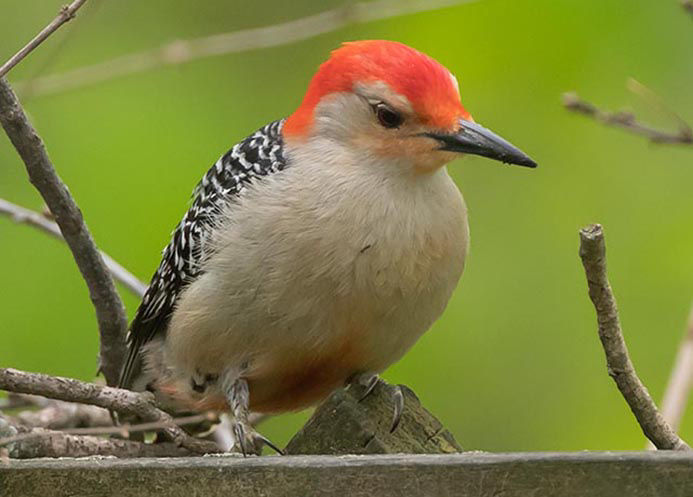Woodpeckers in Florida Population: Variety Introduction and Preservation
Woodpeckers in Florida Population: Variety Introduction and Preservation
Blog Article
Discover the Remarkable World of Woodpeckers: Whatever You Required to Know
The globe of woodpeckers is a world loaded with one-of-a-kind behaviors, intricate adjustments, and a varied range of types. From their habitats and distribution patterns to their feeding practices and specialized physiological features, woodpeckers have long mesmerized the rate of interest of ornithologists and nature fanatics alike.
Woodpecker Habitats and Circulation
In North America, for instance, woodpeckers can be identified in both coniferous and deciduous woodlands, utilizing their solid beaks to forage for insects and produce nesting tooth cavities in trees. In Africa, particular woodpecker types have actually adjusted to dry atmospheres, such as the acacia timberlands, where they play a vital duty in regulating insect populaces.

Feeding Behaviors and Diet
Among the different facets of their habits, woodpeckers show distinctive feeding practices and nutritional choices. These birds are largely insectivores, with a diet regimen that consists of ants, beetles, caterpillars, and various other insects discovered in trees. Woodpeckers utilize their strong beaks to drill right into the bark of trees, penetrating for bugs and larvae concealed below the surface. In enhancement to bugs, woodpeckers also eat nuts, seeds, fruits, and sap. Some varieties have specialized tongues with barbed suggestions that aid them extract bugs from gaps in wood.
Woodpeckers are understood for their drumming habits, which serves not only to communicate with various other woodpeckers however additionally to locate food. The rapid drumming sound is created by the bird pecking on powerful surfaces like dead trees or metal posts. This habits can draw in bugs concealed in the wood, allowing the woodpecker to detect their existence and prey on them.
One-of-a-kind Adaptations for Tree Climbing
In their adept quest of pests hidden within tree bark, woodpeckers have actually advanced amazing anatomical functions that outfit them with one-of-a-kind adjustments for efficient tree climbing. Woodpeckers have strong neck muscular tissues and an one-of-a-kind skull framework that soak up the influence of constant pecking, allowing them to climb up and down without causing injury to their brains. These adjustments showcase the extraordinary transformative layout that allows woodpeckers to navigate trees with accuracy and effectiveness.
Diverse Woodpecker Types Worldwide
With over 200 various types spread out throughout various environments worldwide, the household of Picidae includes an exceptional variety of woodpeckers. These birds can be found in forests, woodlands, savannas, and even metropolitan areas, showcasing their flexibility to different environments. From the renowned Northern Flicker in North America to the colorful and evasive Crimson-backed Flameback in Asia, each woodpecker varieties shows one-of-a-kind qualities in terms of plumage, behavior, and environment choice.
Woodpeckers vary substantially in dimension, with the diminutive Downy Woodpecker determining around 6-7 inches in size, while the powerful Lineated Woodpecker can rise to 17 inches - Woodpeckers in Florida. Their beaks also are available in different sizes and shapes, reflecting their feeding routines. Some types specialize in drawing out bugs from tree bark, like the wikipedia reference Acorn Woodpecker, while others, such as the Black-cheeked Woodpecker, eat fruits and seeds

Preservation Initiatives and Challenges
Conservation this link campaigns for woodpecker populations are crucial in reducing the effect of habitat loss and various other threats facing these varied bird varieties. Woodpeckers encounter numerous difficulties to their survival, mostly due to deforestation, urbanization, environment change, and invasive species. To attend to these concerns, conservation efforts concentrate on securing and bring back woodpecker habitats, executing sustainable forestry methods, and elevating recognition regarding the significance of these birds in ecological communities.
One substantial obstacle in woodpecker conservation is the fragmentation of their environments, resulting in isolated populaces that are much more prone to termination - Woodpeckers in Florida. Guardians function to develop wildlife corridors and protected locations that connect these fragmented environments, allowing woodpeckers to move in between various areas for feeding, reproducing, and shelter

Verdict
In verdict, woodpeckers are fascinating browse this site birds with one-of-a-kind adjustments for tree climbing and feeding habits. They can be found in diverse habitats worldwide, encountering conservation challenges because of habitat loss and human tasks. Recognizing their habitats, diet regimens, and behaviors is critical for conservation efforts to protect these crucial bird species. Further research and conservation actions are needed to guarantee the survival of woodpeckers in the wild.
Report this page